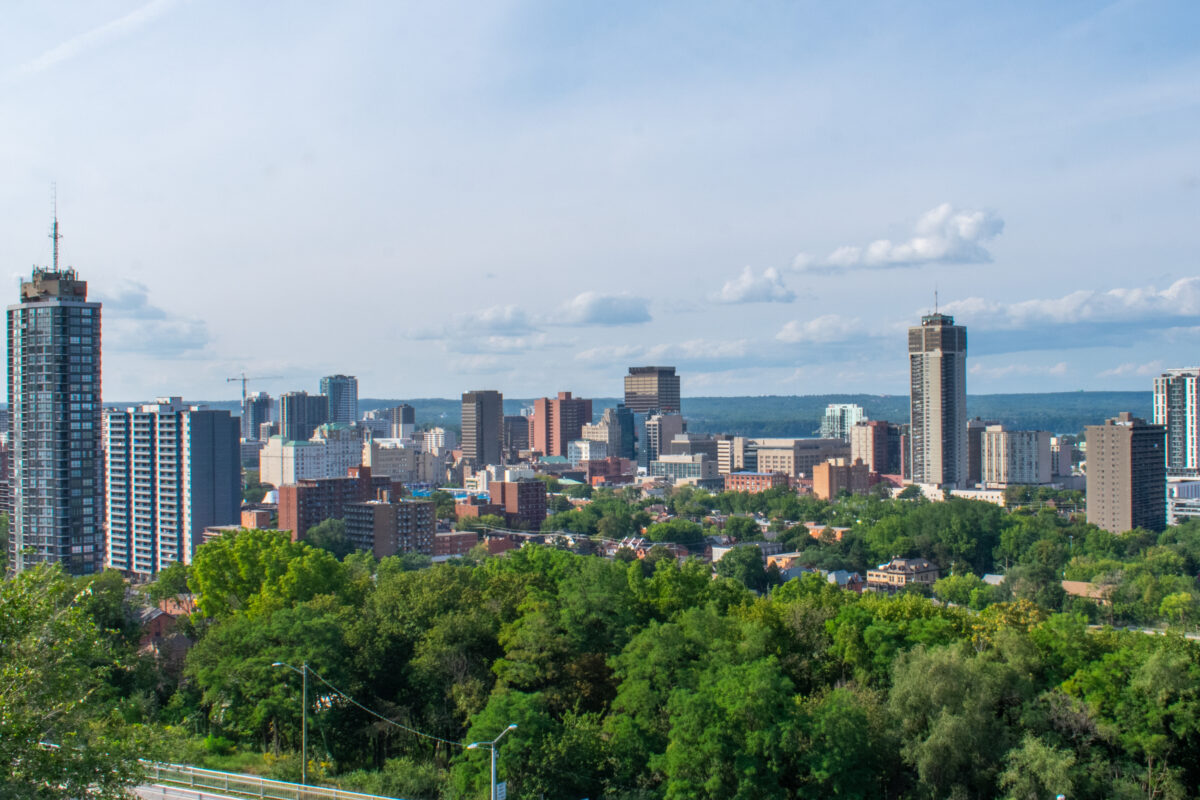What are the issues in a municipal election?
Depends on who you are talking to, where they live, and which race you are talking about.
Hamilton (and most Canadian) municipal elections usually have a single wedge issue, and maybe a theme or two in addition to that.
Year 2000: Amalgamation
2003: Building (or not) the Red Hill Valley Parkway
2006: Mayor Larry Di Ianni’s Municipal Elections Act violation convictions
2010: Where to build the stadium
2014 & 2018: Building (or not) the LRT
What will be the overriding theme of this election? All signs point to trust and change. People do not trust a City Hall already caught in three major cover-ups this term, and they want change.
What do people want change to be?
Between wards, the answer is likely to vary. Even within wards, the issues of concern can vary between neighbourhoods.
The only means candidates have to determine the issues is by canvassing door-to-door and listening to residents.
IELECT Hamilton, a citizen organization advocating for change on City Council, ran a voluntary survey asking people’s opinions on the six IELECT themes: Infrastructure, Economy, Leadership, Environment, Community, and Transportation.
Between its launch in May 2021 and September 25, 2021, there were 2007 survey responses.
McMaster University’s Research Shop recently published an analysis of these 2007 responses.
Most of the respondents to the survey identify as living in the Lower City (wards 1 to 4), with fewer respondents living in the suburban communities of Wards 9, 11, 12, 13, and 15.
SPATIAL ANALYSIS, USEFUL DATA FOR CANDIDATES
The Research Shop took the survey responses and conducted a series of spatial analyses which provide insight, especially for candidates.
For example, Question #2, “I feel safe walking to stores, schools, parks, and restaurants in my neighbourhood.”
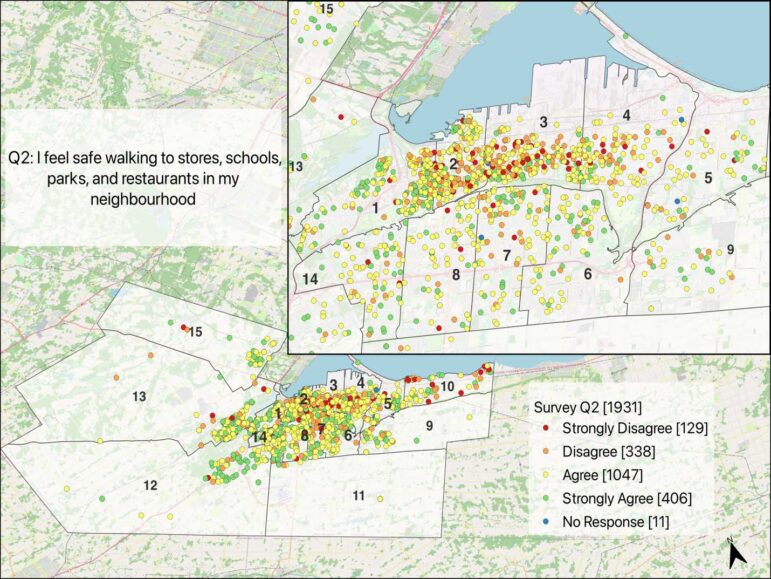
Plotted by postal code centroid, a cluster of people living along Stoney Creek’s lakefront communities strongly disagree with this statement.
This information is useful to any candidate in Ward 10. Walkability is an issue people in this neighbour agree needs to be addressed. Candidates now know to focus some energy on this.
In Ward 7, we see a cluster of concerns along Fennell Avenue in the area of Upper Wentworth. Candidates can focus on this in their canvassing of nearby homes.
Affordability
Affordability is going to be a key issue in this campaign.
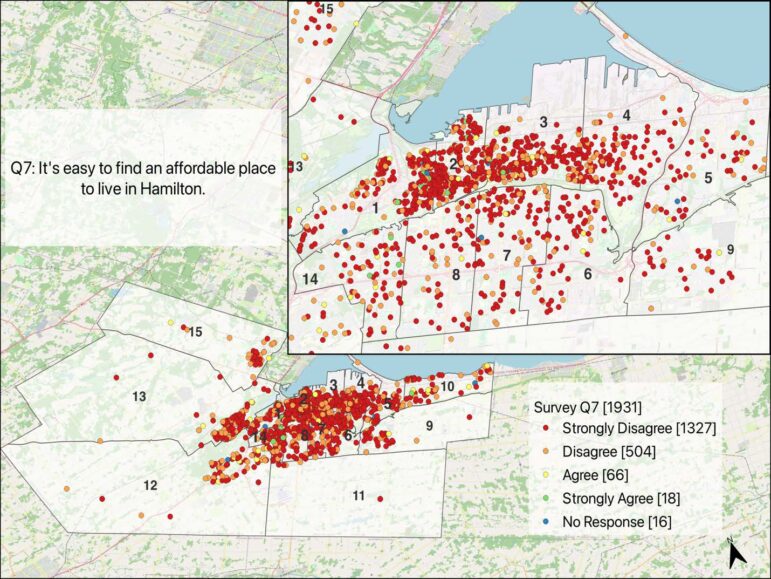
We already knew, from past IELECT materials, that the responses to “It’s easy to find an affordable place to live in Hamilton” were overwhelmingly negative.
The spatial mapping confirms this is a city-wide concern.
Every candidate will need to have a housing plan included in their platform.
HSR Service and Investments
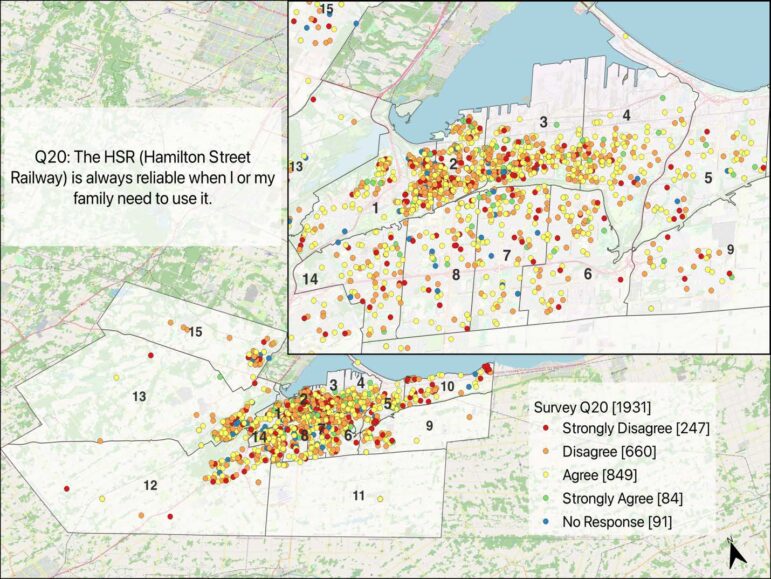
Looking at the spatial trends in the data, we can see patterns more clearly.
Data on the questions regarding public transit service helps to identify pockets where people selected “strongly disagree” to questions regarding access and reliability to transit. It also shows where people feel they are getting good service. A candidate can focus their messaging using this data.
Interestingly, both people who agree and disagree about receiving good HSR service agree that Council is not ‘investing smartly’ in the HSR system.
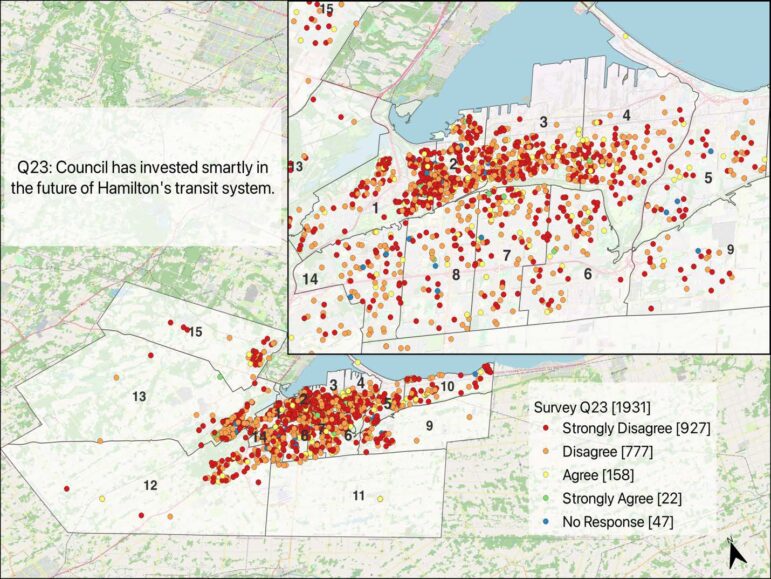
Here’s where candidates have to determine a political equation. Are people willing to pay to have more investment into transit?
It will be interesting to see if and how candidates use the data.
Production Details Current Version: 1.0.0 First published: June 12, 2022 Last edited: June 12, 2022 Author: Joey Coleman Edit Record v. 1.0.0 original version

